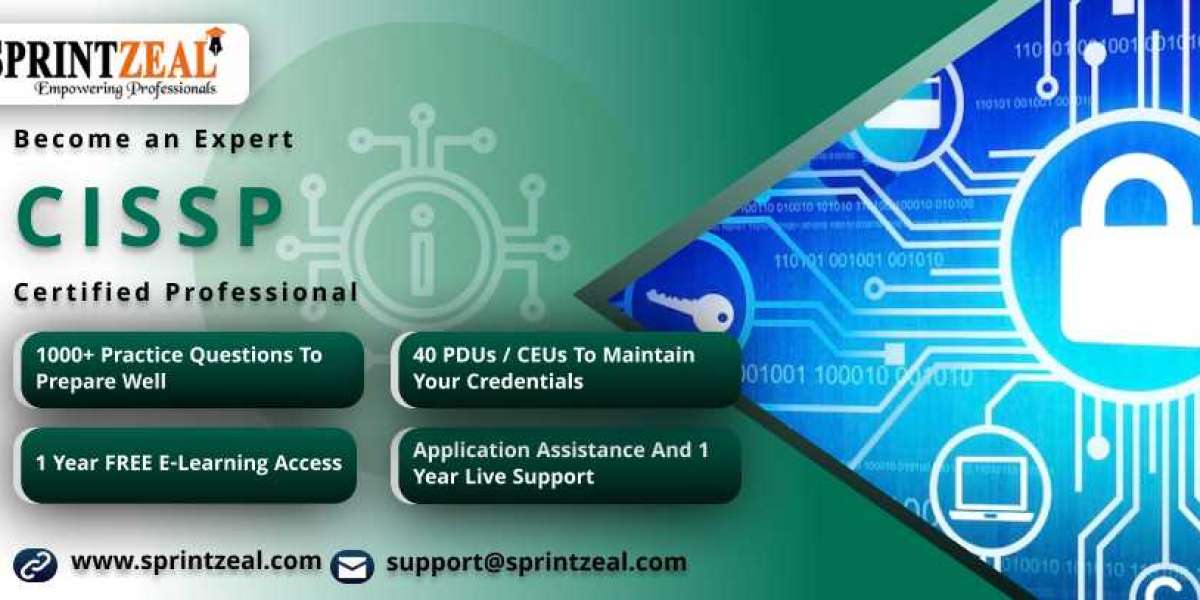Passing the Certified Information Systems Security Professional (CISSP) exam is a significant milestone in the career of any cybersecurity professional. It is often regarded as one of the most challenging and comprehensive exams in the field. I recently achieved this certification, and I want to share my journey, the strategies I employed, and the lessons I learned along the way. My hope is that my experience can serve as a guide for others who are preparing for this rigorous exam.
The Decision to Pursue CISSP
The decision to pursue the CISSP certification was driven by my desire to enhance my knowledge and skills in information security and to gain a credential that is highly respected in the industry. The CISSP certification is globally recognized and demonstrates a deep understanding of cybersecurity principles, making it a valuable asset for career advancement.
Before committing to the exam, I researched extensively about its requirements and benefits. The CISSP covers eight domains, ranging from security and risk management to software development security, making it a comprehensive test of a candidate's expertise. Understanding the breadth and depth of the material was crucial in planning my study strategy.
Crafting a Study Plan
Given the vast amount of material covered by the CISSP, I knew that a structured and disciplined approach was essential. My study plan was built around the following key components:
1. Setting a Timeline
I gave myself six months to prepare for the exam. This timeline was based on my assessment of how much time I could realistically dedicate to studying each week while balancing my professional and personal commitments. I aimed to study for 10-15 hours per week.
2. Gathering Study Materials
Choosing the right study materials was critical. I opted for a combination of resources to ensure a well-rounded understanding of the content. My primary resources included:
- Official (ISC)² CISSP Study Guide: This book provided a comprehensive overview of all eight domains.
- CISSP All-in-One Exam Guide by Shon Harris: Known for its detailed explanations and practical examples, this book was an invaluable resource.
- CISSP Practice Exams: Taking practice exams helped me assess my understanding and identify areas where I needed to focus more.
- Online Training Courses: I enrolled in an online CISSP training course that included video lectures, quizzes, and interactive discussions.
3. Creating a Study Schedule
I divided the six-month period into two phases: learning and revision. The first four months were dedicated to thoroughly learning each domain. I allocated approximately two weeks to each domain, allowing extra time for particularly challenging areas. The remaining two months were reserved for review and practice exams.
4. Taking Notes and Summarizing
As I went through the study materials, I took detailed notes. Summarizing complex concepts in my own words helped reinforce my understanding. I created flashcards for key terms and concepts, which were handy for quick reviews.
5. Joining Study Groups
I joined online CISSP study groups and forums where I could interact with other candidates. Discussing difficult topics and exchanging study tips with peers was incredibly beneficial. It also provided moral support and motivation.
Deep Dive into Each Domain
The CISSP exam covers eight domains, each encompassing various aspects of information security. Here’s a brief overview of how I approached studying each domain:
1. Security and Risk Management
This domain covers foundational concepts such as risk management, governance, and compliance. I focused on understanding the various risk management frameworks and regulatory requirements. Case studies and real-world examples were particularly helpful in grasping these concepts.
2. Asset Security
Asset security deals with the protection of information and assets. I paid special attention to data classification, ownership, and data retention policies. Visual aids like charts and diagrams helped me remember the classification levels and related controls.
3. Security Architecture and Engineering
This domain was one of the more technical sections. I reviewed various security models, architectures, and cryptographic techniques. Hands-on labs and simulations provided practical experience, which was crucial for this domain.
4. Communication and Network Security
Understanding the fundamentals of network architecture and protocols was key. I revisited my networking basics and built on them with a focus on secure communication techniques. Network diagrams and flowcharts were useful tools for visualizing these concepts.
5. Identity and Access Management (IAM)
IAM is critical for controlling access to resources. I studied different authentication methods, access control models, and identity federation. Practice scenarios helped me apply theoretical knowledge to practical situations.
6. Security Assessment and Testing
This domain involves evaluating the effectiveness of security controls. I learned about various assessment techniques, including penetration testing and vulnerability assessments. Practice tests and sample questions helped me get a feel for the types of questions to expect.
7. Security Operations
Security operations cover incident management, disaster recovery, and operational security. I focused on understanding incident response procedures and business continuity planning. Real-life case studies were invaluable for this domain.
8. Software Development Security
This domain addresses security in the software development lifecycle. I reviewed secure coding practices, software development methodologies, and application security testing. Writing and reviewing code snippets helped reinforce these concepts.
Practice, Practice, Practice
As the exam date approached, I shifted my focus to practice exams. Taking full-length practice tests under timed conditions was essential for building endurance and improving time management. I reviewed each practice test thoroughly, paying close attention to the explanations for any incorrect answers.
The Exam Day
On the day of the exam, I made sure to get a good night's sleep and eat a healthy breakfast. I arrived at the testing center early to avoid any last-minute stress. The CISSP exam is computer-based and adaptive, meaning the difficulty of questions adjusts based on your performance. The test can take up to six hours, but I completed it in about four and a half hours.
During the exam, I employed the following strategies:
- Time Management: I paced myself to ensure I had enough time to review marked questions.
- Elimination Method: For difficult questions, I used the process of elimination to narrow down the choices.
- Staying Calm: Remaining calm and composed helped me think clearly and avoid second-guessing myself.
Conclusion
Passing the CISSP exam was a challenging yet rewarding experience. It required a significant investment of time and effort, but the knowledge and skills gained were invaluable. My success was the result of a well-structured study plan, a variety of study resources, and consistent practice.
For those considering the CISSP certification, my advice is to start early, stay disciplined, and leverage multiple resources. Join study groups, engage in discussions, and take as many practice exams as possible. Remember, persistence and dedication are key. With the right approach and mindset, you too can achieve this prestigious certification and take a significant step forward in your cybersecurity career.














